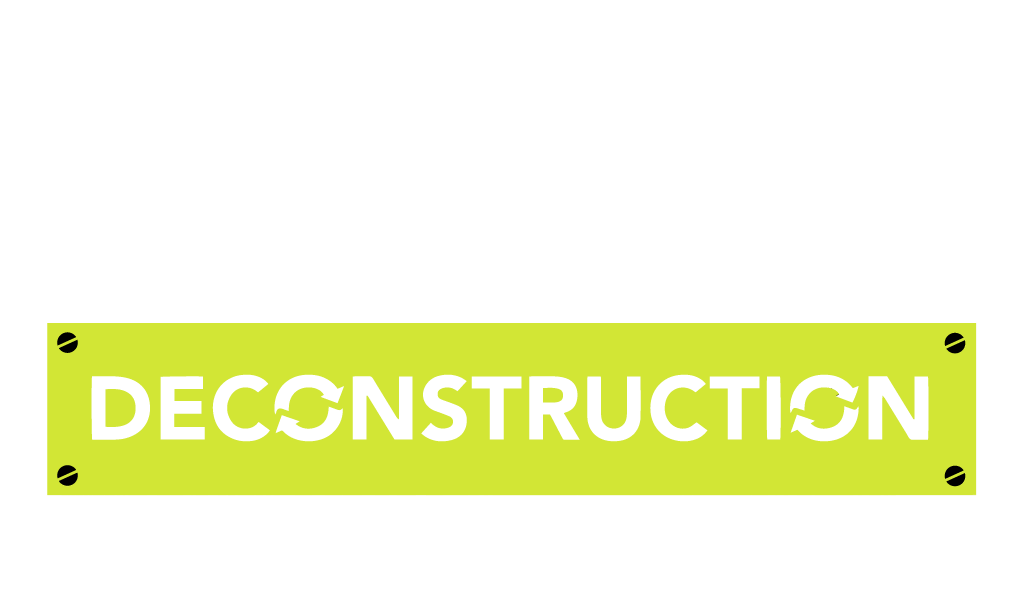Deconstructing a commercial space
A Project Recap (2022)
Last November, at Recycle Colorado’s Annual Meeting, we met the wonderful folks at We Don’t Waste – a Denver-based nonprofit that works to reduce hunger and food waste throughout the city by recovering high-quality, unwanted food from the food industry and delivering it to nonprofit partners in need such as food pantries, soup kitchens, and schools.
The burgeoning organization was relocating to a new office: A 30,000 sq ft commercial property that was in need of renovations. They reached out to us to bid some of their demolition work because of our shared salvage-first mentality and aligned waste-reduction goals.
How Commercial Deconstruction Practices Were Implemented
After hearing from We Don’t Waste Director of Impact and Engagement, Allie Hoffman, that deconstruction was something she wanted to entertain for this job, she contacted their general contractor to ask that he request a bid from Perks Deconstruction for the demolition portion of the renovation.
"We Don't Waste believes that food should go to people not landfills, so we rescue millions of pounds of food every year that we then distribute to the community,” Allie said. “When undergoing a renovation (and demolition), we knew that we wanted to hold firm to our values of keeping materials out of the landfill, which made Perks Deconstruction the obvious choice. Preventing waste is inherent to what we do, and we felt that the demolition process should be no exception."
Many folks we speak with have concerns about the amount of waste that can come from a remodeling project. In fact, about 20% of our work comes from homeowners, businesses, and others who request that their general contractors use our greener deconstruction services for their demolition needs.
This puts a good degree of power in the hands of individuals and organizations in helping to reduce construction and demolition (C&D) waste in their communities. It also makes deconstruction education and outreach a powerful tool in encouraging and expanding deconstruction services in places where community members may be unaware of the more sustainable, alternative practice.
Assessing the Job
All deconstruction jobs require an in-person evaluation of the site to accurately assess the scope of work. This is where our owner, Anna Perks, walks through the site to write up cost estimates and plans for all materials, such as which materials can be salvaged and donated for reuse, which materials can be recycled, and what will happen to all other materials (i.e. landfill, save for reuse on-site).
After the bid is accepted, Perks Deconstruction Project Manager and Co-Owner, Clemente Castanon, assesses the reuse/recycling viability of the materials, and our crew begins deconstructing spaces. Materials are sorted properly and disposal plans are followed.
Oftentimes, contractors hear “recycling” or “donation” and assume our services will cost more. In the case of this commercial building project, we were able to offer a competitive bid that made choosing our deconstruction service a no-brainer. Our crew is efficient and productive, making sure to not touch materials more than once if they can help it.
Climate impacts, and Materials recycled and donated
With this commercial building project, we had three roll-offs on-site: One 30-yard roll-off for landfill items, one 14-yard roll-for metal recycling, and one 14-yard for wood recycling. We also had additional piles designated for both donation and client reuse on-site.
Items we salvaged for reuse include:
all commercial doors
refrigerator panels
metal sinks
newer ceiling tiles
oak cabinets
large commercial printer
Overall, we kept 24,613 lbs of material out of the landfill, with a 23% diversion rate. According to the EPA Warm model, this amount of waste diverted is equivalent to conserving 6 households’ annual energy consumption, 96 barrels of oil, or 4,611 gallons of gasoline.
Metal accounted for 15,203 lbs of recyclable material from the site, which came from metal wall studs or ceiling tile grids (our team first removed the drywall from the metal wall studs).
There was a ton of carpet, floor tile, ceiling tile, and drywall that was heavy and amounted to a lot of the unrecoverable landfill material. Still, we’re proud that we kept out nearly 12.3 tons of material from the landfill.
Commercial Deconstruction Project Partners
We were thrilled to meet two new deconstruction “partners” at this job:
We Don’t Waste: A waste-conscious nonprofit organization we adore that works hard to repurpose quality, unwanted food in our community
Jordy Construction: New to the world of deconstruction, Mike Campbell, Construction Superintendent, told us he was “impressed with how clean and professional you are, and with how much you recycled.”
We also called upon Bud’s Warehouse, a local “home improvement thrift store,” to pick up the salvaged cabinets. We highly recommend their free service for picking up reusable household or commercial items in and around Denver.
Final Thoughts
Mike at Jordy Construction commented that he had never seen a demo company recycle and salvage as much material as we did. For us, it’s just the way we do business. We understand that there are competing priorities and we do our best to provide an efficient, organized, and friendly service that building owners can feel good about.
As a relatively new certified WBE (Women Business Enterprise) and MBE (Minority Business Enterprise), we hope to take on more commercial work in 2023. There’s a lot of growth and projects happening around Denver, and we think we can lead the way in exemplifying a salvage-first mentality and hopefully inspire other contractors to do the same.
Need to renovate your home or commercial space In the denver or boulder area? We’d love to help!
Learn all about our services, or contact us to discuss your job. We look forward to speaking with you!

